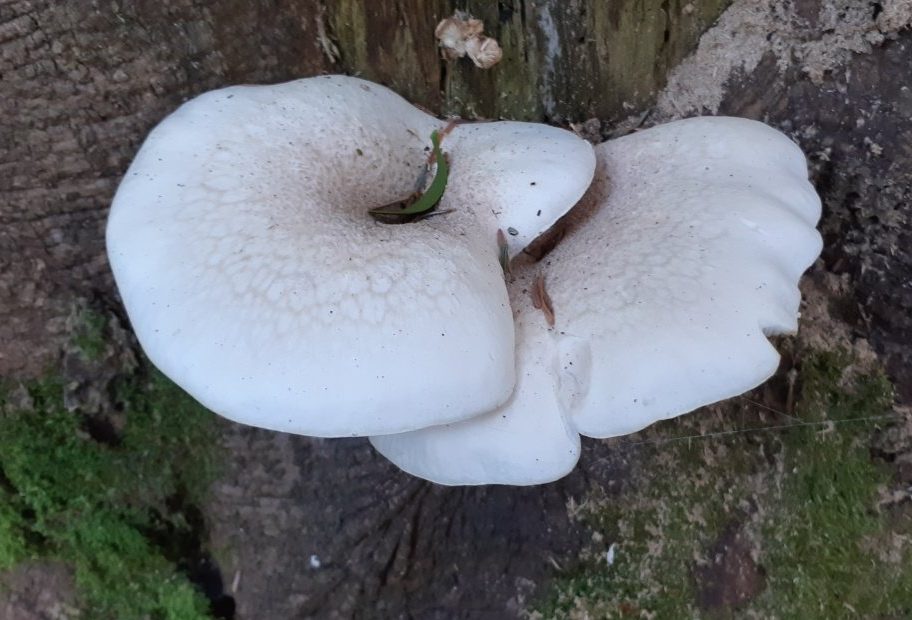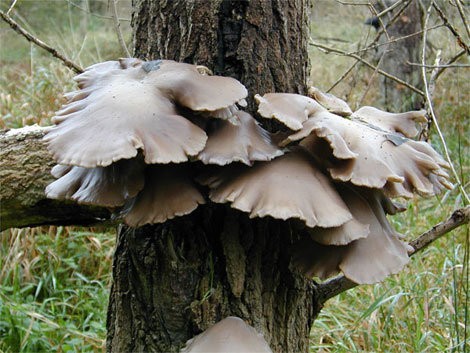Oak oyster mushroom (Pleurotus dryinus)
- Division: Basidiomycota (Basidiomycetes)
- Subdivision: Agaricomycotina (Agaricomycetes)
- Class: Agaricomycetes (Agaricomycetes)
- Subclass: Agaricomycetidae (Agaricomycetes)
- Order: Agaricales (Agaric or Lamellar)
- Family: Pleurotaceae (Voshenkovye)
- Genus: Pleurotus (Oyster mushroom)
- Type: Pleurotus dryinus (Oak oyster mushroom)

Hat:
The oyster mushroom cap has a semicircular or elliptical shape, sometimes tongue-shaped. The wide part of the fungus is usually tucked up by 5-10 cm throughout the entire life cycle of the fungus. The color is grayish-white, slightly brownish, quite variable. The slightly rough surface of the oyster mushroom cap is covered with dark small scales. The flesh of the cap is elastic, thick and light, has a pleasant mushroom smell.
Records:
White, often set, descending deep down the stem, of a lighter shade than the stem. With age, the plates can take on a dirty yellow color. The plates of young oyster mushrooms are covered with a white coating of light gray or white. It is on this basis that oak oyster mushroom is determined.
Spore powder:
White.
Leg:
Thick (1-3 cm thick, 2-5 cm long), slightly tapering at the base, short and eccentric. Has the color of the cap or slightly lighter. The flesh of the leg is white with a yellow tint, fibrous and hard at the base.
Despite the name, oak oyster mushroom bears fruit on the remains of various trees, and not just on oaks. The fruiting of oak oyster mushroom occurs in July-September, which brings it closer to lung oyster mushroom.

Oak oyster mushroom is distinguished by a characteristic private bedspread. Knowing this, it is impossible to confuse oak oyster mushroom with lung or oyster.
Oak oyster mushroom is considered in foreign literature as an inedible mushroom, while in some sources, its nutritional qualities are noted on the positive side. But, the relatively low prevalence of the fungus does not allow us to accurately answer this question.









